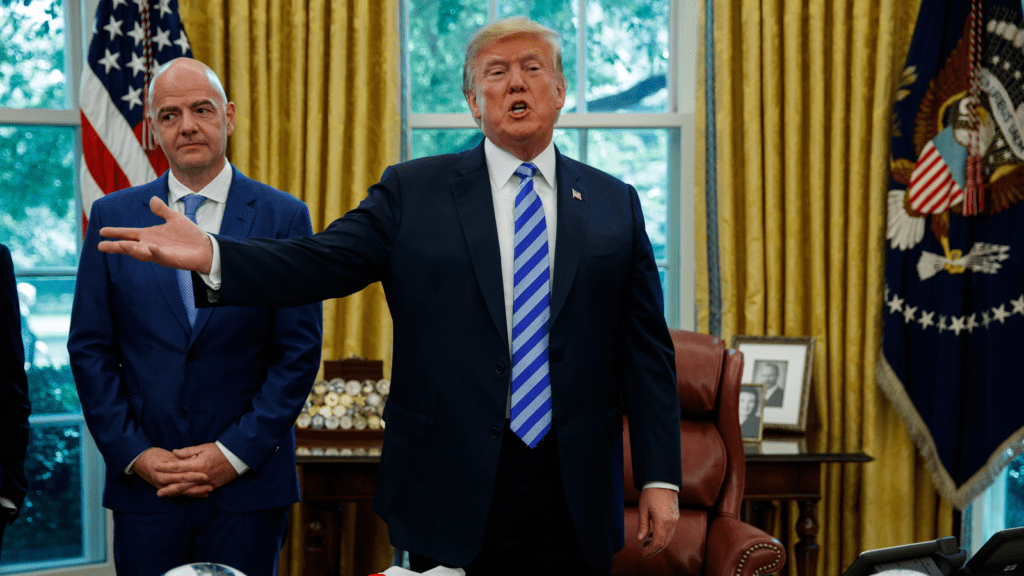The $3 Trillion Question: What Does This Staggering Figure Mean for the Global Economy?

The number $3 trillion is almost incomprehensible in its scale. It’s a figure that can represent entire economies, massive investments, or even the cost of global crises. But what does $3 trillion mean in today’s world? Whether it’s tied to government spending, corporate valuations, or international initiatives, this colossal amount can reshape economies, influence markets, and affect billions of lives. In this blog post, we’ll explore the significance of $3 trillion, its potential implications, and how it fits into the broader economic landscape as of April 2025.
Understanding the Scale of $3 Trillion
To put $3 trillion into perspective, let’s break it down. One trillion is a million million—1,000,000,000,000. Multiply that by three, and you’re looking at a number that’s larger than the GDP of many countries. For instance, according to World Bank data, India’s GDP in 2023 was approximately $3.4 trillion, while the United Kingdom’s was around $3.1 trillion. In other words, this amount is roughly the economic output of a major global economy over an entire year.
If we think in terms of individual wealth, 3 trillion is far beyond the net worth of even the richest people on the planet. As of early 2025, Elon Musk, often cited as one of the wealthiest individuals, has a net worth fluctuating around $400 billion, according to Forbes. That means this amount is more than seven times Musk’s fortune. If you were to spend $1 million a day, it would take you over 8,200 years to burn through $3 trillion.

Where Could $3 Trillion Come From?
A figure like $3 trillion doesn’t just appear out of thin air—it’s typically tied to significant economic activity, government budgets, or global initiatives. Let’s explore a few contexts where $3 trillion might emerge.
- Government Spending and Stimulus Packages
During the COVID-19 pandemic, the United States passed stimulus packages that collectively approached $5 trillion, including the $2.2 trillion CARES Act in 2020. A $3000 billion package in 2025 could be a response to another global crisis—perhaps a climate disaster, a new pandemic, or an economic downturn. For example, the U.S. federal budget for the fiscal year 2024 was around $6.1 trillion, according to the Congressional Budget Office. A $3 trillion injection would represent nearly half of that annual budget, signaling a massive governmental effort to address a pressing issue. - Corporate Valuations
In the corporate world, $3000 billion is a benchmark for the most valuable companies. As of April 2025, Apple and Microsoft have both flirted with market capitalizations around $3 trillion, depending on stock market fluctuations. A company reaching this valuation reflects not just its financial success but also its influence on global markets, technology, and consumer behavior. For instance, Apple’s $3 trillion valuation in 2023 made it the first company to hit that milestone, a testament to its dominance in tech. - Global Initiatives
On the international stage, $3 trillion could represent the cost of a major global initiative. Take climate change, for example. The United Nations has estimated that achieving net-zero emissions by 2050 could require investments of $2–$3 trillion annually in clean energy and infrastructure. A $3 trillion commitment in 2025 could fund renewable energy projects, reforestation efforts, or climate-adaptation measures for vulnerable nations, significantly advancing the fight against global warming.

The Economic Impact of $3 Trillion
The injection or allocation of $3 trillion into any sector would have profound ripple effects across the global economy. Let’s examine some potential impacts.
- Inflation and Interest Rates
If $3 trillion were introduced through government spending, it could lead to inflationary pressures. When large amounts of money flood the economy, demand for goods and services can outstrip supply, driving up prices. We saw this during the post-COVID recovery, where U.S. inflation peaked at 9.1% in June 2022, partly due to stimulus spending. Central banks, like the Federal Reserve, might respond by raising interest rates to cool the economy, which could increase borrowing costs and slow growth in sectors like housing and manufacturing. - Job Creation and Economic Growth
On the positive side, $3000 billion in spending or investment could create millions of jobs. For example, a $3 trillion infrastructure plan could fund the construction of roads, bridges, and renewable energy plants, employing workers across multiple industries. The American Jobs Plan, proposed in 2021 at $2.3 trillion, was estimated to create 2.7 million jobs over a decade, according to Moody’s Analytics. Scaling that up to $3 trillion could push job creation even higher, boosting consumer spending and economic growth. - Global Inequality
The distribution of $3 trillion matters just as much as its size. If allocated to developing nations, it could reduce global inequality by funding education, healthcare, and infrastructure. However, if concentrated in already wealthy regions or corporations, it could exacerbate disparities. For instance, if tech giants like Apple or Microsoft use their $3 trillion valuations to dominate markets further, smaller competitors might struggle to survive, widening the gap between economic winners and losers.

The Cultural and Political Dimensions
Beyond economics, $3000 billion carries cultural and political weight. The term “Hindutva,” as seen in the image you provided, refers to a political and cultural ideology promoting Hindu nationalism in India. If $3000 billion were tied to a Hindutva-driven initiative—say, a massive cultural or religious project—it could have significant implications for India’s social fabric.
For example, a $3 trillion investment in Hindutva-related projects might fund the construction of temples, educational institutions, or media campaigns to promote Hindu values. While this could strengthen cultural identity for some, it might also deepen divisions in India’s diverse, multi-religious society.
Critics of Hindutva often argue that such initiatives marginalize minority communities, while supporters see them as a way to reclaim India’s Hindu heritage. A $3000 billion commitment would amplify these debates, potentially reshaping India’s political landscape for decades.
The Risks of Mismanagement
With great money comes great responsibility. A $3000 billion fund, if mismanaged, could lead to waste, corruption, or unintended consequences. History offers plenty of cautionary tales. The U.S. war in Afghanistan, which spanned 2001 to 2021, cost an estimated $2.3 trillion, according to Brown University’s Costs of War project. Much of that money was lost to inefficiency, corruption, and poorly planned projects. A $3 trillion initiative in 2025 would need robust oversight to ensure funds are used effectively, whether they’re for climate action, economic stimulus, or cultural projects.
What $3 Trillion Could Achieve
Let’s end on a hopeful note by imagining what $3000 billion could accomplish if used wisely. In the realm of global health, it could eradicate diseases like malaria, which kills over 600,000 people annually, according to the World Health Organization. In education, it could provide universal access to schooling for the 258 million children currently out of school, per UNESCO data. In technology, it could fund the development of artificial general intelligence (AGI), potentially revolutionizing industries and solving complex global problems.
Conclusion
The figure of $3000 billion is more than just a number—it’s a symbol of possibility, power, and responsibility. Whether it’s tied to government spending, corporate growth, or ideological movements like Hindutva, its impact depends on how it’s deployed. As we navigate the challenges and opportunities of 2025, the question isn’t just what $3 trillion can buy but what kind of future it can build. With careful planning and a focus on equity, this staggering sum could address some of humanity’s greatest challenges, from climate change to inequality. But if mismanaged, it could deepen divisions and create new problems. The $3 trillion question, then, is not just about money—it’s about vision, values, and the world we want to create.








